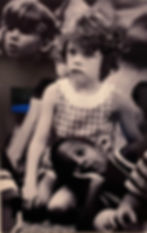Museums Tell Stories?
Museums are realizing that they tell stories. Stories about history, science, people, objects, and art. About time!
It was with great delight when I opened the latest issue of Museum--the bimonthly publication of the American Alliance of Museums--to see that the theme is storytelling!
Many museum mission statements include the words "educate" and "interpret." As visitors, most of us would not be excited to be told that object labels, tour guides, and audio tours are designed to "educate us" or to "provide interpretation." On the other hand, most of us love stories! A good museum story improves the visitor experience, sparks curiosity, and is part of the reason why we visit museums.
by Susan Marie Ward

Lecturing their visitors (museums stuck in the past)
Many museums seem to be stuck on providing facts, dates, and definitions about what's in their collection, as if they're lecturing to their visitors. Yes, that's part of what visitors want to know, but an enthralling visitor experience includes walking out the door filled with stories. Stories about how objects were used. Stories about the people who made the objects. Stories about people who lived in a different era. Stories about families who struggled through human or natural disasters. Not lectures--whether provided through labels or guided tours or audio tours--but stories.
Here are several snippets from labels that provide information but sound like they are written by curators for other curators (boring!).
"The verticality of 'Spring Landscape' is reinforced by the tall thin tree at the right edge. A brightly lit path separates the shaded foreground and the gate from the distant vista. The light color choice and paint handling are typical of Impressionism." (from a significant museum South of the Mason-Dixon line)
"Japanese artist Yayoi Kusama’s work is widely diverse in theory and practice, including painting, drawing, sculpture, assemblage, performance, video, and installation." (from a museum in a Northern city that sits on a big river)
Yes these labels share facts and information, but they don't tell stories, they don't intrigue or captivate the visitor.
Telling stories (museums moving into the future)
In "Storytelling in art museum experiences," Maia Elisabeth Sirnes writes, "Stories have the power to evoke emotions, to give immersive experiences and even change visitors’ values and beliefs – effects that may generate long-lasting memories that span beyond the physical visit." That's what the label snippets below do. They evoke emotions. Interestingly, these two examples are from very small museums.
This first partial label was from an exhibit about a long-time newspaper photographer in a small town in North Carolina. The exhibit displayed over 100 photos taken over six decades.

"This is one of Robert Reed’s favorite photographs, from composition to subject matter. He said he always, “shoots first and worries about the controversy later.” This was taken in the late 1970s amid changing times. It is literally a picture of innocence—skin color does not matter to either child. (Hickory Museum of Art)
The next partial label was in an exhibit called "We Will Not be Silenced: Standing for Missing and Murdered Indigenous Women" at a museum in Western North Carolina.

"In an effort to better understand the ‘why,’ Marvel [an indigenous therapist] began researching historic grief and trauma. She discovered that her grandfather’s relationship with abuse and violence started when he was a child in boarding school. Her research also enabled her to recognize the abuse that was present in her own relationships. (Western Carolina University Fine Art Museum)
Another example of excellent storytelling that has stayed with me since 2018 was the exhibit Visitors to Versailles 1682-1782 at the Metropolitan Museum of Art. The exhibit was filled with engaging stories about people, events, architecture, and experiences in the palace lived in by the Sun King, Louis XIV. But for me, the shining example was the audio tour. The narration was the voices and perspectives of many different visitors who would have come to Versailles. Also, the audio tour was filled with the sound of carriages, horses, fountains, people talking, bells ringing... To hear this example of highly-developed storytelling, click here.
New direction for museums
This March/April 2023 issue of Museum suggests that even though museums have been mumbling about improving their interpretation, their visitor experience, and their storytelling for years, maybe it's truly happening as illustrated in each of the magazine's articles.
The magazine shares several examples of museums that are improving their storytelling.

"Changing the Narrative" tells about how the American Indian Museum in New York is using comics to share relatable stories.
The Illinois Holocaust Museum is preserving and sharing oral histories of survivors using VR (virtual reality) technology and holograms.
Historic Sotterley in Hollywood, Maryland, is shifting from telling romanticized stories about the Colonial Revival to including stories about all of the people who have lived on their land.
None of the museums or historic sites said that this has been an easy process. They explain that it's taken new research, new thinking, and how not everyone likes the changes. But they've all done it because they want to improve their connection to their visitors, and improve their visitor experience by telling relevant, inclusive, and intriguing stories.
When visiting museums, have you noticed any positive or negative examples of intriguing storytelling? Good or bad labels? Enticing or boring tour guides? Factual or engaging audio tours? Good stories spark curiosity and encourage us to return to the museum.


